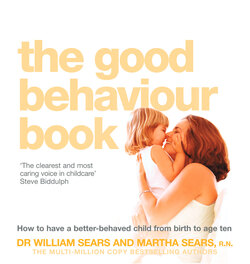Читать книгу The Good Behaviour Book - Марта Сирс - Страница 13
2. Know Your Child
ОглавлениеThese are the three most useful words in discipline. Study your child. Know your child’s needs and capabilities at various ages. Your discipline techniques will be different at each stage because your child’s needs change. A temper tantrum in a two-year-old calls for a different response than it does in a four-year-old. In later chapters we will point out what behaviour is normal, what’s not, and what to do at each stage of a child’s development.
Know age-appropriate behaviour. Many conflicts arise when parents expect children to think and behave like adults. You need to know what behaviour is usual for a child at each stage of development in order to recognize true misbehaviour. We find discipline to be much easier with our eighth child than it was with our first child, mainly because we now have a handle on which behaviours call for instruction, patience, and humour, and which demand a firm, corrective response. We tolerate those things that go along with a child’s age and stage (for example, most two-year-olds can’t sit still in a restaurant for more than a few minutes), but we correct behaviour that is disrespectful or dangerous to the child or to others (“You may not climb on the table”).
Get inside your child’s mind. Children don’t think like adults. Kids try crazy things and think crazy thoughts – at least by adult standards. You will drive yourself crazy if you judge a child’s behaviour from an adult viewpoint. A two-year-old who runs out into the street isn’t being defiant, he just wants his ball back. Action follows impulse, with no thought in between. A five-year-old likes her friend’s toy so much that she “borrows” it. An adult may stop and weigh the necessity, safety, and morality of an act, but a young child doesn’t. Throughout this book we will show you ways to get behind the eyes of your child, so that you can understand what causes your child’s behaviour and figure out how to redirect it. We call it thinking “kid first”. Here’s an example.
Our Matthew at age two was a very focused child. He would become so engrossed in a play activity that it was difficult for him to let go when it was time to leave. One day when he was playing and it was time for us to depart (we were late for an appointment), Martha scooped Matthew up and carried him to the door. Matthew protested with a typical two-year-old tantrum. At first Martha had the usual “Hey, I’m in charge here” feelings and felt that she was justified in expecting Matthew to obey quickly and be willing to leave his toys. But as she was carrying the flailing child out the door, she realized that her discipline gauge was out of balance and she was not handling things in the best way. Her actions were a result of her need to leave, but they didn’t take into account Matthew’s need for advance warning and a more gradual transition. She realized it wasn’t in Matthew’s nature to click off his interest in play so quickly, even if we did have a deadline. He was not defying her but was just being true to himself. He needed more time to let go of his activities. So she calmly took him back to the play setting, sat down with him, and together they said “Bye-bye, toys, bye-bye, trucks, bye-bye, cars”, until he could comfortably release himself from the activities. It only took a couple of minutes, time that would otherwise have been wasted struggling with Matthew in the car. This was not a “technique” or “method”; this disciplinary action evolved naturally from the mutual respect between parent and child and the knowledge that Martha had about Matthew. At the end of this exercise Martha felt right because it had accomplished what she wanted – getting Matthew out of the house with the least amount of hassle. She taught him a method of releasing himself from an activity without resorting to a tantrum. That’s what discipline is all about.
Realizing how much better discipline worked when we considered our children’s needs in our decisions was a major turning point for us. Initially, we had to work through the fear that we were letting our children manipulate us, because we had read, heard from others, and grown up with the idea that good parents are always in control. We found, however, that considering our children’s point of view actually helped us take charge of them. Knowing our children became the key to knowing how to discipline them. They knew we were in charge because we were able to help them obey. That left no doubt in their minds or ours that mum and dad knew best.
